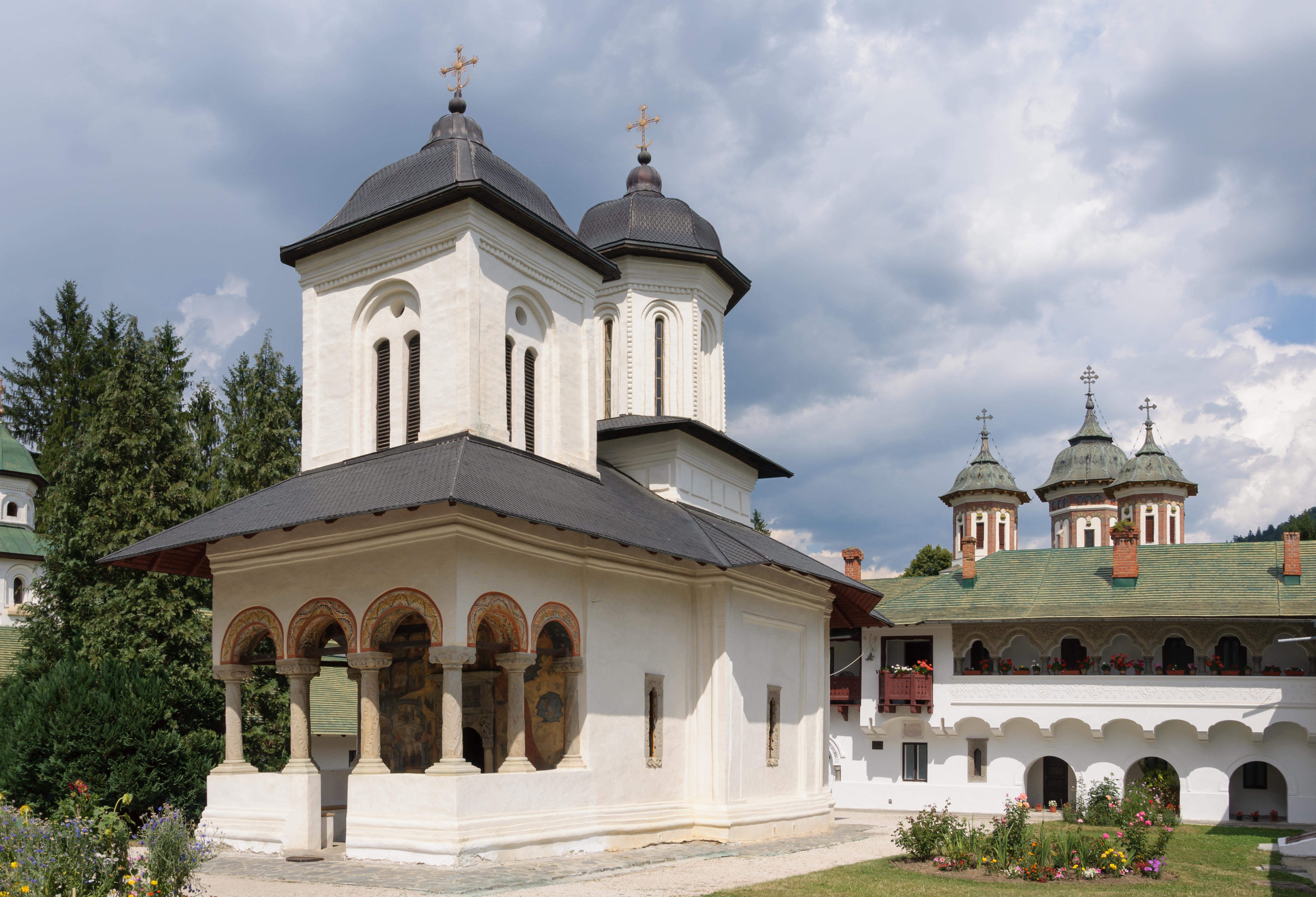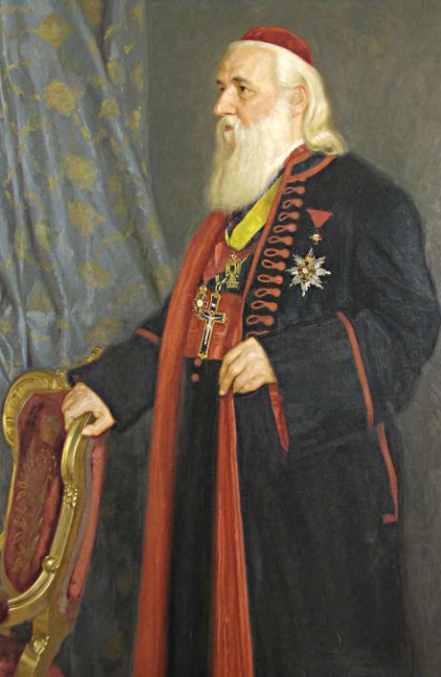|
Grigorie Comșa
Grigorie Gh. Comșa (; born Gheorghe Comșa; May 13, 1889–May 25, 1935) was an Austria-Hungary, Austro-Hungarian-born Romanian cleric who became a bishop within the Romanian Orthodox Church. Born in Comăna de Sus, Brașov County, in the Transylvania region, he went to the village church school where his father taught for over thirty years. He then attended the state Hungarian gymnasium in nearby Făgăraș from 1900 to 1908, and went to the Sibiu theological institute from 1908 to 1911. On a scholarship from the Archdiocese of Sibiu, Sibiu Archdiocese, he studied at the law faculty of the Eötvös Loránd University, University of Budapest from 1911 to 1915, obtaining a doctorate.Păcurariu, p. 445 Meanwhile, he attended the faculty of Catholic theology. He later studied theology at the University of Bucharest, taking an undergraduate degree in 1921 and a doctorate in 1925. Ordained in September 1915 as an unmarried deacon by Ioan Mețianu, he served at the Sibiu Orthodox Ca ... [...More Info...] [...Related Items...] OR: [Wikipedia] [Google] [Baidu] |
Austria-Hungary
Austria-Hungary, also referred to as the Austro-Hungarian Empire, the Dual Monarchy or the Habsburg Monarchy, was a multi-national constitutional monarchy in Central Europe#Before World War I, Central Europe between 1867 and 1918. A military and diplomatic alliance, it consisted of two sovereign states with a single monarch who was titled both the Emperor of Austria and the King of Hungary. Austria-Hungary constituted the last phase in the constitutional evolution of the Habsburg monarchy: it was formed with the Austro-Hungarian Compromise of 1867 in the aftermath of the Austro-Prussian War, following wars of independence by Hungary in opposition to Habsburg rule. It was dissolved shortly after Dissolution of Austria-Hungary#Dissolution, Hungary terminated the union with Austria in 1918 at the end of World War 1. One of Europe's major powers, Austria-Hungary was geographically the second-largest country in Europe (after Russian Empire, Russia) and the third-most populous (afte ... [...More Info...] [...Related Items...] OR: [Wikipedia] [Google] [Baidu] |
Bucharest
Bucharest ( , ; ) is the capital and largest city of Romania. The metropolis stands on the River Dâmbovița (river), Dâmbovița in south-eastern Romania. Its population is officially estimated at 1.76 million residents within a greater Bucharest metropolitan area, metropolitan area of 2.3 million residents, which makes Bucharest the List of cities in the European Union by population within city limits, 8th most-populous city in the European Union. The city area measures and comprises 6 districts (''Sectors of Bucharest, Sectoare''), while the metropolitan area covers . Bucharest is a major cultural, political and economic hub, the country's seat of government, and the capital of the Muntenia region. Bucharest was first mentioned in documents in 1459. The city became the capital in 1862 and is the centre of Romanian media, culture, and art. Its architecture is a mix of historical (mostly History of architecture#Revivalism and Eclecticism, Eclectic, but also Neoclassical arc ... [...More Info...] [...Related Items...] OR: [Wikipedia] [Google] [Baidu] |
Arad, Romania
Arad () is the capital city of Arad County, at the edge of Crișana and Banat. No villages are administered by the city. It is the third largest city in Western Romania, behind Timișoara and Oradea, and the List of cities and towns in Romania, 12th largest in Romania, with a population of 145,078. A busy transportation hub on the Mureș River and an important cultural and industrial center, Arad has hosted one of the first Music school, music conservatories in Europe, one of the earliest normal schools in Europe, and the first car factory in Hungary and present-day Romania. Today, it is the seat of a Romanian Orthodox Church, Romanian Orthodox archbishop and features a Romanian Orthodox theological seminary and two universities. The city's multicultural heritage is owed to the fact that it has been part of the Kingdom of Hungary, the Eastern Hungarian Kingdom, the Ottoman Empire, Ottoman Temeşvar Eyalet, Principality of Transylvania (1570–1711), Principality of Transylvania, ... [...More Info...] [...Related Items...] OR: [Wikipedia] [Google] [Baidu] |
Hodoș-Bodrog Monastery
The Hodoș-Bodrog Monastery is one of the oldest monastic institutions in Romania. It was originally a Roman Catholic (Benedictine) monastery, built before 1177 and destroyed before 1293. The present monastery, which belongs to the Romanian Orthodox Church, was built near the ruins of the first monastery in the late 14th or early 15th century. Benedictine monastery The Benedictine monastery was built for the noble Hodos kindred in Arad County in the Kingdom of Hungary. It was first mentioned as ''ecclesia de Hudust'' in a royal charter, issued in 1177. The monastery was dedicated to Saint Peter, according to a 1278 royal charter. Andrew II of Hungary granted a yearly income of 1000 salt cubes to the abbot. The last record of the monastery was made in 1278: in this year, Paul Gutkeled bequeathed the right of patronage of the monastery upon his five nephews. The monastery seems to have been destroyed shortly thereafter, most probably during the rebellion of the Cumans, because ... [...More Info...] [...Related Items...] OR: [Wikipedia] [Google] [Baidu] |
Asociația Transilvană Pentru Literatura Română și Cultura Poporului Român
The Transylvanian Association for Romanian Literature and the Culture of the Romanian People (, ASTRA) is a cultural association founded in 1861 in Sibiu (Hermannstadt). It had an important role in the cultural life and the movement of national awakening for the Romanians in Transylvania. Its first president was the ethnic Romanian Orthodox Metropolitan of Sibiu — Andrei Şaguna. Its vice-president was the Greek-Catholic priest Timotei Cipariu, and George Bariţiu was secretary. Shortly after its founding, the association established a boarding school, museum, and large library in its provenance of Sibiu, and later developed a network of ASTRA libraries in Transylvanian towns. On 7 February 1895, ASTRA decided to edit and publish a ''Romanian Encyclopedia'' under the supervision of Cornel Diaconovici. It was published in three volumes between 1898 and 1904, and had an important role in the culture and politics of the Romanians. Today, the central ASTRA library cont ... [...More Info...] [...Related Items...] OR: [Wikipedia] [Google] [Baidu] |
Banat
Banat ( , ; ; ; ) is a geographical and Historical regions of Central Europe, historical region located in the Pannonian Basin that straddles Central Europe, Central and Eastern Europe. It is divided among three countries: the eastern part lies in western Romania (the counties of Timiș County, Timiș, Caraș-Severin County, Caraș-Severin, Arad County, Arad south of the Mureș (river), Mureș river, and the western part of Mehedinți County, Mehedinți); the western part of Banat is in northeastern Serbia (mostly included in Vojvodina, except for a small part included in the Belgrade, Belgrade Region); and a small northern part lies within southeastern Hungary (Csongrád-Csanád County). The region's historical ethnic diversity was severely affected by the events of World War II. Today, Banat is mostly populated by ethnic Romanians, Serbs and Hungarians, but small populations of other ethnic groups also live in the region. Nearly all are citizens of either Serbia, Romania or H ... [...More Info...] [...Related Items...] OR: [Wikipedia] [Google] [Baidu] |
Romanian Writers' Society
The Romanian Writers' Society () was a professional association based in Bucharest, Romania, that aided the country's writers and promoted their interests. Founded in 1909, it operated for forty years before the early Communist Romania, communist regime transformed it into the Writers' Union of Romania. Background Towards the end of the 19th century, a growing number of Romanian writers felt the need for a professional association to defend their interests before editors and bookstores and facilitate mutual aid. Although the circle surrounding the ''Literatură și artă'' magazine shared these objectives, the idea of an independent association developed later and under pressure from foreign professional organizations that were concerned about intellectual property rights. Consequently, the circle became the Romanian Society for Literature and Art, which was legally recognized in May 1904. The society included artists of various kinds with diverse interests, as well as artists' des ... [...More Info...] [...Related Items...] OR: [Wikipedia] [Google] [Baidu] |
Romanian Academy
The Romanian Academy ( ) is a cultural forum founded in Bucharest, Romania, in 1866. It covers the scientific, artistic and literary domains. The academy has 181 active members who are elected for life. According to its bylaws, the academy's main goals are the cultivation of Romanian language and Romanian literature, the study of the national history of Romania and research into major scientific domains. Some of the academy's fundamental projects are the Romanian language dictionary ('' Dicționarul explicativ al limbii române''), the dictionary of Romanian literature, and the treatise on the history of the Romanian people. History On the initiative of C. A. Rosetti, the Academy was founded on April 1, 1866, as ''Societatea Literară Română''. The founding members were illustrious members of the Romanian society of the age. The name changed to ''Societatea Academică Romînă'' in 1867, and finally to ''Academia Română'' in 1879, during the reign of Carol I. The foun ... [...More Info...] [...Related Items...] OR: [Wikipedia] [Google] [Baidu] |
Sinaia Monastery
The Sinaia Monastery, located in Sinaia, in Prahova County, Romania, was founded by Prince Mihail Cantacuzino in 1695 and named after the great Saint Catherine's Monastery on Mount Sinai in Egypt. As of 2005, it is inhabited by 13 Christian Orthodox monks led by hegumen Macarie Boguș. It is part of the Archdiocese of Bucharest. Overview Situated in the Prahova Valley, the monastery gave its name to the nearby town of Sinaia. The monastery consists of two courtyards surrounded by low buildings. In the centre of each courtyard there is a small church built in the Byzantine style. One of them—"Biserica Veche" (The Old Church)—dates from 1695, while the more recent "Biserica Mare" (The Great Church) was built in 1846. The monks possess a library that is a repository for valuable jewels belonging to the Cantacuzino family, as well as the earliest Romanian translation of the Bible, dated 1668. Take Ionescu, former Prime Minister of Romania, is buried on the grounds. History Prin ... [...More Info...] [...Related Items...] OR: [Wikipedia] [Google] [Baidu] |
Archdiocese Of Arad
The Archdiocese or Archbishopric of Arad (), formerly the Bishopric of Arad (, ) is an episcopal see of the Romanian Orthodox Church, under the administration of the Metropolis of Banat, with jurisdiction over Arad County in Romania. The current head is bishop Timotei Seviciu. History The history of Eastern Orthodox Christianity on the territory of the present-day bishopric dates back to late Antiquity and early Middle Ages. During the later medieval periods, authorities of the Kingdom of Hungary had an ambivalent attitude towards the presence of Eastern Orthodox Christians in southern and eastern regions of the realm. During the period of the Ottoman rule, from the middle of the 16th century to the end of the 17th century, the region of Arad was under ecclesiastical jurisdiction of the Serbian Patriarchate of Peć. The Eparchy of Arad in its modern form was created after the Great Turkish War (1683-1699), when the city of Arad and its region became part of the Habsburg monar ... [...More Info...] [...Related Items...] OR: [Wikipedia] [Google] [Baidu] |
Greater Romania
Greater Romania () is the Kingdom of Romania in the interwar period, achieved after the Great Union or the related pan-nationalist ideal of a nation-state which would incorporate all Romanian speakers.Irina LivezeanuCultural Politics in Greater Romania: Regionalism, Nation Building & Ethnic Struggle, 1918-1930 Cornell University Press, 2000, p. 4 and p. 302 In 1920, after the incorporation of Transylvania, Bukovina, Bessarabia and parts of Banat, Crișana, and Maramureș, the Romanian state reached its largest peacetime geographical extent (295,049 km2). Today, the concept serves as a guiding principle for the unification of Moldova and Romania. The idea is comparable to other similar conceptions such as Greater Bulgaria, Megali Idea, Greater Yugoslavia, Greater Hungary and Greater Italy. Ideology The theme of national identity had been always a key concern for Romanian culture and politics. The Romanian national ideology in the first decades of the twentieth cen ... [...More Info...] [...Related Items...] OR: [Wikipedia] [Google] [Baidu] |



